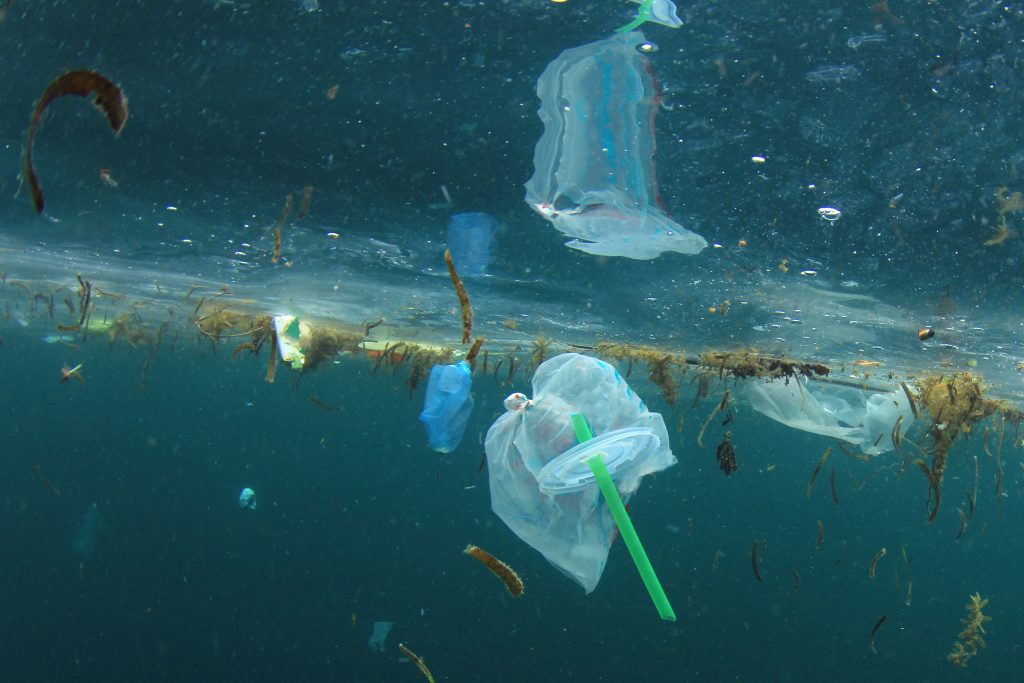Sunday Times Green
Oceans Of Plastic
Tackling the problem of plastic pollution in the ocean is going to require plenty of innovative thinking. In the Americas, for example, cleanup organisation 4Ocean partly funds its mission to scoop up plastic waste from the sea by recycling the materials to create fashion bracelets, for which it charges $20 a pop.
It’s a good idea, but against the scale of the problem it is – pardon the pun – a drop in the ocean. It’s currently estimated that the largest “ocean garbage patch”, areas where currents drag waste until it collects and breaks down, reaches across 1.6 million square miles. The Ocean Cleanup project estimates that this patch contains 1.8 trillion pieces of plastic, most of which are around the size of your fingernail or smaller. Some of the waste is more than 50 years old.
Plastic waste in the seas inevitably finds its way into the food chain and causes great harm. Reducing it is going to take a lot of effort from a lot of different stakeholders.
In December 2017, for example, South Africa joined the UN Environment’s #CleanSeas campaign, announcing drives to increase recycling. The campaign aims to “turn the tide on plastic” by inspiring action from governments, businesses and individuals on ocean pollution.
The African continent has a way to go. Two years on, and only nine countries (out of 54) have signed the #CleanSeas pledge. The signatories are Benin, Cote D’Ivoire, Kenya, Madagascar, Nigeria, Seychelles, Sierra Leone, South Africa and Sudan.
Beyond the sea
To overcome ocean pollution, we need to start by changing behaviours on land, says CEO of the Sustainable Seas Trust Tony Ribbink.
“The real issues are not what happens in the oceans, but where people live,” Ribbink says. “People born into areas where they are surrounded by plastic and waste can be helped to recognise plastic as a valuable resource – then collect the trash for cash.”
“The first step for consumers,” says Ribbink, “is to become well informed.”
Ideally, recycling bins should be readily available. The African Marine Waste Network (AMWN) is helping municipalities and businesses to increase the number of recycling bins.
Ribbink says the country is on its way towards meeting its global obligations. “It’s taking time to adapt, but with Barbara Creecy, Minister of Environment, Forestry and Fisheries, at the helm, we have confidence that South Africa will reach its goals.”
In South Africa, it’s the economy that is driving recycling as an industry, says Anton Hanekom, executive director at Plastics SA. “[That’s] unlike Europe where recycling is an environmental principle subscribed to by most citizens and local councils and is seen as ‘the right thing to do’. Recycling in South Africa needs to be financially viable to succeed. The costs include manual labour to sort, wash bays to wash polluted materials, and high electricity costs.”
There are many opportunities to grow the sector that still need to be explored.
“Many metropolitan households do not have regular refuse removal, much less a two-bin waste collection system where recyclables are collected separately,” says Hanekom. “According to StatsSA, 34 per cent of South Africans do not have access to waste management services.”
In 2019, the South African Initiative to End Plastic Waste was established. This includes the entire packaging chain – from the chemicals sector, polymer and raw material producers, to retailers, fast-food franchises and other organisations.






 Sign-up and receive the Business Media MAGS newsletter OR SA Mining newsletter straight to your inbox.
Sign-up and receive the Business Media MAGS newsletter OR SA Mining newsletter straight to your inbox.